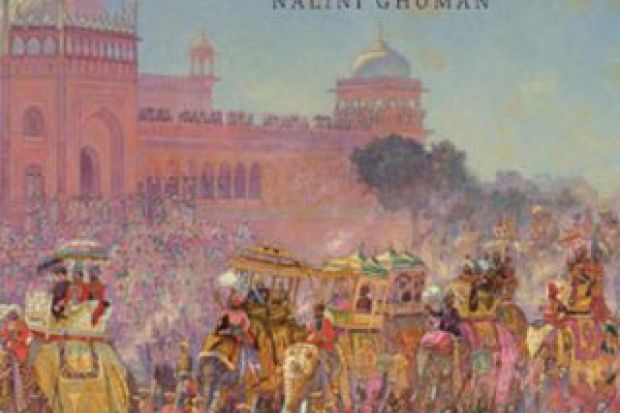Westerners tend to think of Western-Indian musical interaction as a phenomenon of the 1960s. Musicians such as Ravi Shankar and Yehudi Menuhin, Joe Harriott and John Meyer, and John and Alice Coltrane, not to mention the Beatles, practised a purportedly benign Orientalism that accommodated Indian musical practices alongside Western modes of composition and improvisation. In England at least, this was not new: Indian music had already registered significantly, and in demonstrating various Indian sources both for composers of the Edwardian “English Musical Renaissance”, and the subsequent generation, Resonances of the Raj invites us to rethink the relationship between Empire and cultural hybridity.
At the book’s heart are four chapters, each a complete essay in its own right, that illustrate the ways India played on the English musical imaginary during the 50 years from the Edwardian celebration of empire to the achievement of independence. First, Edward Elgar is deftly rescued from the enormous condescension of left-liberal posterity. The source materials and compositional techniques deployed for his 1912 masque The Crown of India are similar to those used in his better-known concert works; his much-vaunted “Englishness” had, if not directly Indian sources, then certainly an Oriental component. Similarly, Gustav Holst’s Indian-based music, such as the 1910 Choral Hymns from the Rig Veda, provided techniques used in his best-known work, the 1914 Planets suite. The third essay explores the musical hinterland, and the psychosocial meanings, of Amy Woodforde-Finden’s popular Kashmiri Song (“Pale hands I loved, beside the Shalimar…”). The fourth examines the paradoxical traces of Indianness in the work of the assertively eccentric Dorset-based, Indian-English composer Kaikhosru Sorabji, who found little good to say about contemporary India (or anything else) but who occasionally used Indian sources, and used them exquisitely.
Framing these central chapters are two complementary studies, of the pioneering musicologist Maud McCarthy, and her husband, the composer John Foulds. McCarthy not only transcribed Indian music but (unlike previous musicologists who had visited India) studied performance; this knowledge she took back to the UK, where she gave many lecture-recitals, and met Foulds. After proselytising Indian music in the UK, and battling BBC indifference to Foulds’ compositions, the couple went to India. While McCarthy continued to research, in 1936 Foulds became director of European music at All-India Radio, forming an ensemble that did not just play European classical and light music, but began to experiment with hybrid performance practice. A decade later this groundbreaking Indo-European orchestra was inherited by another AIR director, Ravi Shankar, whose role as arranger, composer and director of this band led to his contribution to that “crossover moment” of the 1960s and after.
Resonances of the Raj is a good read, full of illuminating touches – the image of the staid musicologist Donald Tovey, whose Essays in Musical Analysis became a model for concert programme notes, “almost dancing with joy” at a lecture-recital by McCarthy, prompts a smile. The book is furnished with images, music examples and extensive endnotes. A companion website provides colour versions of the book’s black and white illustrations, an extended bibliography, MP3 samples of many of the book’s music examples, and a discography of recordings, with links to online retailers and free legal sources where available. While printed books on music last, this is the way to do them.
Resonances of the Raj: India in the English Musical Imagination 1897-1947
By Nalini Ghuman
Oxford University Press, 368pp, £32.99
ISBN 9780199314898
Published 10 July 2014
Register to continue
Why register?
- Registration is free and only takes a moment
- Once registered, you can read 3 articles a month
- Sign up for our newsletter
Subscribe
Or subscribe for unlimited access to:
- Unlimited access to news, views, insights & reviews
- Digital editions
- Digital access to THE’s university and college rankings analysis
Already registered or a current subscriber? Login





